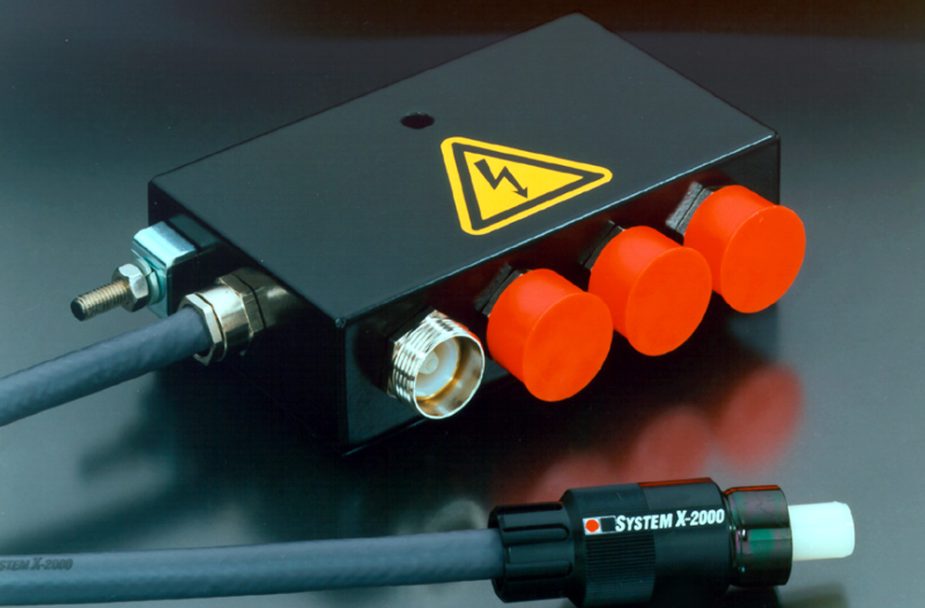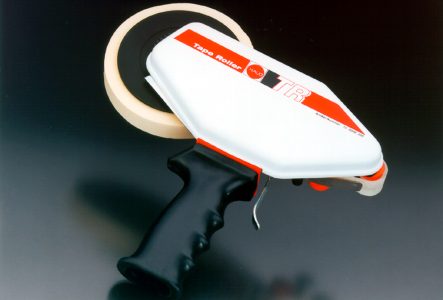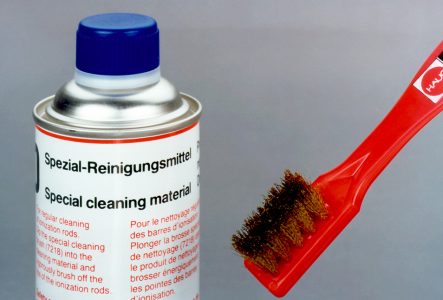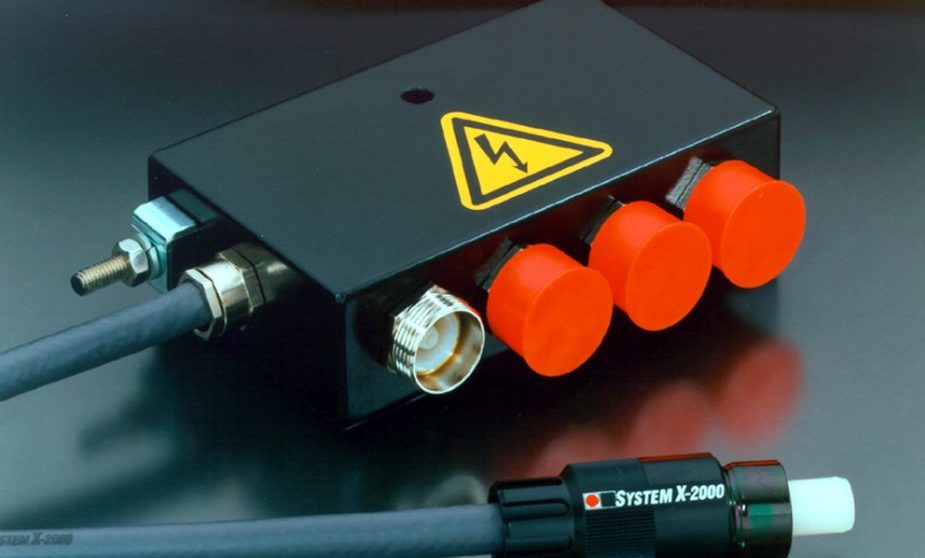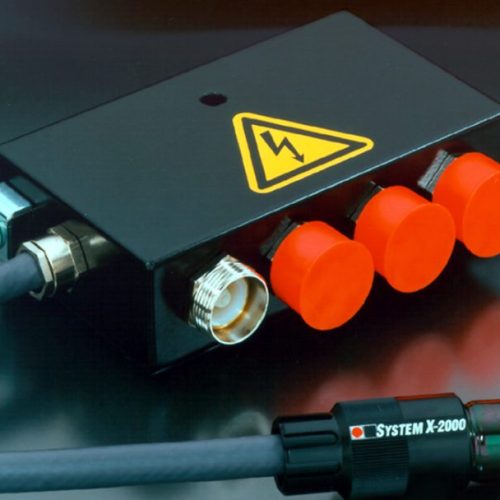Accessories
Generalities
Both discharge and charge bars need proper and regular cleaning. In fact, dirt that settles on the tips can cause micro-discharges that damage them irreparably.
A simple and inexpensive system is to use the special brass filament brush, together with the special cleaning fluid. Haug’s Tape-Roller is an adhesive tape applicator with a shaped wheel for protecting anti-static bars. It has the function of protecting such bars from dusts and paints, especially conductive ones. It does not alter the functionality of the bars and the tape is applied directly to the bar due to the special profile.
Available accessories
HAUG provides a large number of accessories necessary for the maintenance and functionality of electrostatic charging and discharging systems.
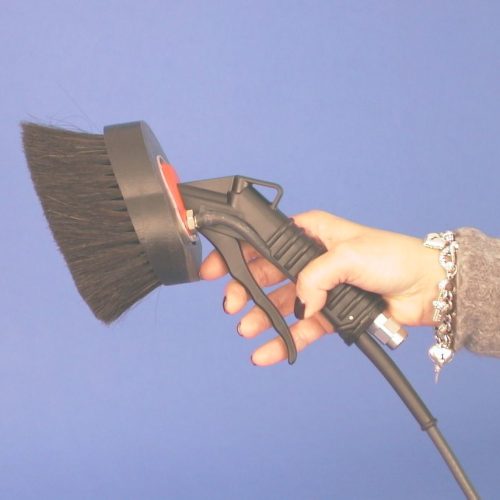
Lady Brush
Lady Brush is a brush that can be applied to the “Lady Gun” to aid dust removal. The brush is made of horsehair and therefore does not generate electrostatic charges by rubbing.
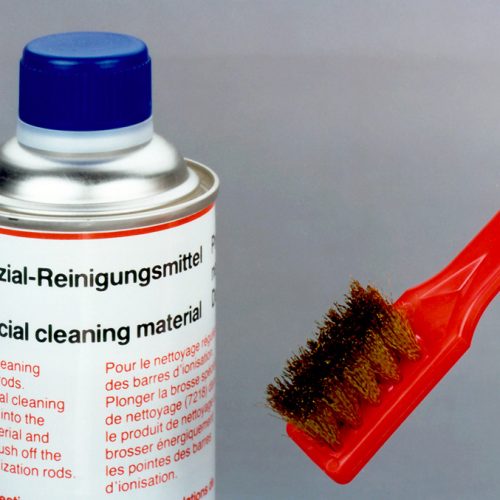
Brush + cleaning liquid
Both discharge and charge bars need proper and regular cleaning. In fact, dirt that settles on the pins can cause microdischarges that damage them irreparably
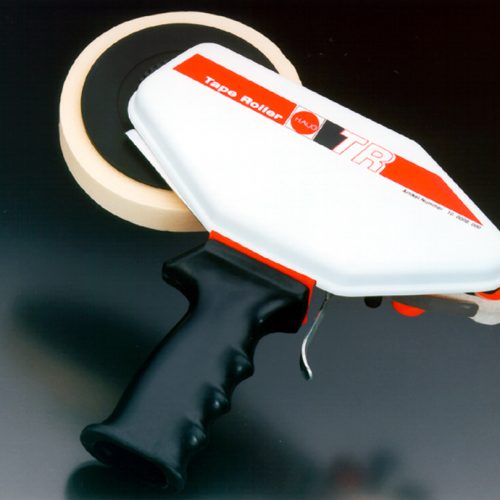
Tape-Roller
HAUG’s Tape-Roller is an adhesive tape applicator with a shaped wheel for protecting anti-static bars. It has the function of protecting such bars from dusts and paints, especially conductive ones. It does not alter the functionality of the bars and the tape is applied directly to the bar due to the special profile
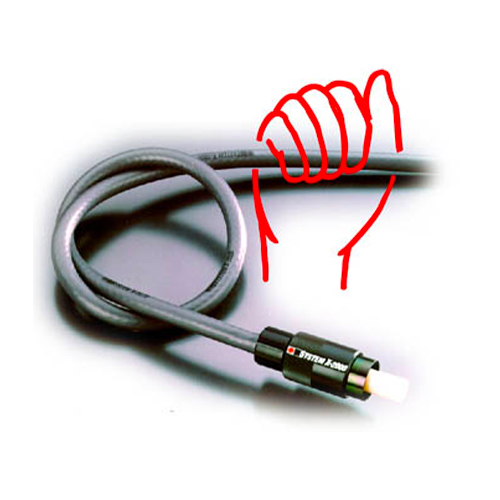
Connettore System X-2000
Patented by HAUG, this special connector is used to connect discharge bars to power supplies. It can carry a voltage of up to 10KVac. Thanks to its spring-loaded device, it prevents accidental contact with the operator’s hands.
Do you want to request an offer?
Are you interested in receiving more information and being contacted by one of our specialized operators?
Request your offer now

Do you want to request an offer?
Are you interested in receiving more information and being contacted by one of our specialized operators?
Request your offer now
Frequently asked questions
What is electrostatics?
Electrostatics studies stationary electric fields, that is, generated by static charges arranged on dielectric surfaces.
What can be done with electrostatic systems?
One can eliminate the unwanted charge or one can generate a charge.
What is meant by ionization?
It is equivalent to the elimination of electrostatic charge. A bar produces ions that remove charges on the surface.
In what cases should a surface be loaded?
The most typical case is to make one surface adhere to another, making a kind of electrostatic “bonding.”
Are discharge and charge technically different processes?
Yes, a discharge (ionizing) bar generates ions while a charge bar generates a stationary electric field.
If I want to download a movie, can I use one ion bar?
No, since the charges on a dielectric are stationary it is necessary to discharge both faces of the film via two opposing bars.
Why not more simply use an anti-static brush?
This is a good solution to REDUCE the charge, but if you need to ELIMINATE the charge you must use an ionizing bar.
Up to what distance does a discharge bar act?
20-30 mm. However, with the help of appropriate compressed or ventilated air systems, it is possible to reach 500 mm and more.
Are there injury risks in the use of electrostatic systems?
Discharge (ionizing) bars are safe to the touch and do not give any problems (excluding special reported cases). The charge bars, on the other hand, should not be touched during operation; in fact, they should be shielded.
How can I verify the effectiveness of an electrostatic treatment?
Numerous electrostatic charge measurement systems are available in the catalog, but generally the result is seen immediately after treatment.

